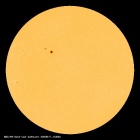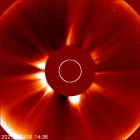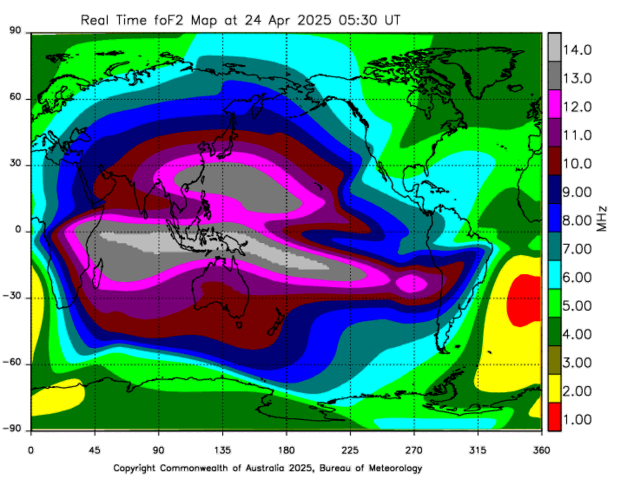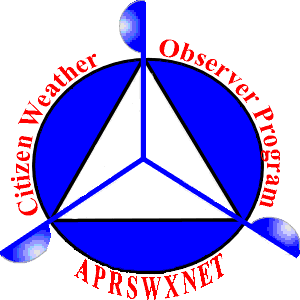Space Weather Observations, Alerts, and Forecast
Current Space Weather Overview

|
3-day Solar-Geophysical Forecast
Product: 3-Day Forecast
- Issued: 2025 May 17 0030 UTC
Prepared by the U.S. Dept. of Commerce, NOAA, Space Weather Prediction Center.
Geomagnetic Activity Observation and Forecast
The greatest observed 3 hr Kp over the past 24 hours was 3 (below NOAA Scale levels). The greatest expected 3 hr Kp for May 17-May 19 2025 is 4.67 (NOAA Scale G1).
| May 17 | May 18 | May 19 | |
|---|---|---|---|
| 00-03UT | 3.33 | 3.67 | 4.67 (G1) |
| 03-06UT | 2.00 | 3.67 | 4.33 |
| 06-09UT | 2.00 | 4.00 | 4.67 (G1) |
| 09-12UT | 3.00 | 4.67 (G1) | 4.33 |
| 12-15UT | 3.00 | 3.67 | 3.67 |
| 15-18UT | 3.67 | 4.33 | 4.00 |
| 18-21UT | 3.33 | 4.67 (G1) | 4.00 |
| 21-00UT | 3.67 | 4.67 (G1) | 3.67 |
Rationale: G1 (Minor) geomagnetic storms are likely over 18-19 May due to influence from a positive polarity coronal hole.
Solar Radiation Activity Observation and Forecast
Solar radiation, as observed by NOAA GOES-18 over the past 24 hours, was below S-scale storm level thresholds.
| May 17 | May 18 | May 19 | |
|---|---|---|---|
| S1 or greater | 5% | 5% | 5% |
Rationale: No S1 (Minor) or greater solar radiation storms are expected. No significant active region activity favorable for radiation storm production is forecast.
Radio Blackout Activity and Forecast
No radio blackouts were observed over the past 24 hours.
| May 17 | May 18 | May 19 | |
|---|---|---|---|
| R1-R2 | 60% | 55% | 55% |
| R3 or greater | 20% | 15% | 15% |
Rationale: R1-R2 (Minor-Moderate) radio blackouts are likely, with a chance for R3 (Strong), over 17-19 May.
Real Time Images of the Sun
SOHO EIT 171
|
SOHO EIT 195
|
SOHO EIT 284
|
SOHO EIT 304
|
SDO/HMI Continuum
|
SDO/HMI Magnetogram
|
LASCO C2
|
LASCO C3
|
The sun is constantly monitored for sun spots and coronal mass ejections. EIT (Extreme ultraviolet Imaging Telescope) images the solar atmosphere at several wavelengths, and therefore, shows solar material at different temperatures. In the images taken at 304 Angstrom the bright material is at 60,000 to 80,000 degrees Kelvin. In those taken at 171 Angstrom, at 1 million degrees. 195 Angstrom images correspond to about 1.5 million Kelvin, 284 Angstrom to 2 million degrees. The hotter the temperature, the higher you look in the solar atmosphere.
Current Space Weather
|
|
SDO-NASA and the [AIA, EVE, and/or HMI] consortium. Primer on Space Weather |
Current Sunspot Activity
|
Sunspot Count for Last 30 Days Click for sunspot listing for the last 30 days Graph courtesy: Newquay Weather |
Sunspot Counts for this Year Click for sunspot listing for the current year Graph courtesy: Newquay Weather |
Yearly Sunspot Count since 1700 Click for yearly sunspot list since 1700 Graph courtesy: Newquay Weather |
Sunspots are solar magnetic storms. The spots appear darker because the temperature of the spots are lower than the surrounding photosphere.
They serve as a reservoir for solar flares and coronal mass ejections, which cause Aurorae, power/communication outages, and satellite anomalies.
The Suns activity waxes and wanes in an 11-year sunspot cycle; Solar Minimum is when the number of sunspots are lowest.
There seems to be a correlation between Solar Min/Maximum and Earths weather. The extent to which Ozone, stratospheric winds, global circulation patterns, and cloud seeding are all affected are still being studied.
Solar Wind
Real-Time Solar Wind
Real-Time Solar Wind data broadcast from NASA's ACE satellite. |
|
WSA-Enlil Solar Wind Prediction |
| Move your cursor over the timeline to 'scrub' through the forecast. |
WSA-Enlil is a large-scale, physics-based prediction model of the heliosphere, used by the Space Weather Forecast Office to provide 1-4 day advance warning of solar wind structures and Earth-directed coronal mass ejections (CMEs) that cause geomagnetic storms. Solar disturbances have long been known to disrupt communications, wreak havoc with geomagnetic systems, and to pose dangers for satellite operations.
Solar Cycle
The Solar Cycle is observed by counting the frequency and placement of sunspots visible on the Sun. The forecast comes from the Solar Cycle Prediction Panel representing NOAA, NASA and the International Space Environmental Services (ISES). The Prediction Panel has predicted Cycle 25 to reach a maximum of 115 occurring in July, 2025. The solar radio flux at 10.7 cm (2800 MHz) is an excellent indicator of solar activity. Often called the F10.7 index, it is one of the longest running records of solar activity. The F10.7 radio emissions originates high in the chromosphere and low in the corona of the solar atmosphere. The F10.7 correlates well with the sunspot number as well as a number of UltraViolet (UV) and visible solar irradiance records.
Auroral Activity Forecast
Tonight's Aurora Viewline Forecast
|
Tomorrow's Aurora Viewline Forecast
|
Instruments on board the NOAA Polar-orbiting Operational Environmental Satellite (POES) continually monitor the power flux carried by the protons and electrons that produce aurora in the atmosphere. SWPC has developed a technique that uses the power flux observations obtained during a single pass of the satellite over a polar region (which takes about 25 minutes) to estimate the total power deposited in an entire polar region by these auroral particles. The power input estimate is converted to an auroral activity index that ranges from 1 to 10.
Radio Communications Impact
D-Region Absorption
D-Region Absorption Prediction
|
The D-Region Absorption Product addresses the operational impact of the solar X-ray flux and SEP events on HF radio communication. Long-range communications using high frequency (HF) radio waves (3 - 30 MHz) depend on reflection of the signals in the ionosphere. Radio waves are typically reflected near the peak of the F2 layer (~300 km altitude), but along the path to the F2 peak and back the radio wave signal suffers attenuation due to absorption by the intervening ionosphere. The D-Region Absorption Prediction model is used as guidance to understand the HF radio degradation and blackouts this can cause.
VHF and HF Band Conditions
| Space weather impacts radio communication in a number of ways. At frequencies in the 1 to 30 mega Hertz range (known as “High Frequency” or HF radio), the changes in ionospheric density and structure modify the transmission path and even block transmission of HF radio signals completely. These frequencies are used by amateur (ham) radio operators and many industries such as commercial airlines. They are also used by a number of government agencies such as the Federal Emergency Management Agency and the Department of Defense. There are several types of space weather that can impact HF radio communication. In a typical sequence of space weather storms, the first impacts are felt during the solar flare itself. The solar x-rays from the sun penetrate to the bottom of the ionosphere (to around 80 km). There the x-ray photons ionize the atmosphere and create an enhancement of the D layer of the ionosphere. This enhanced D-layer acts both as a reflector of radio waves at some frequencies and an absorber of waves at other frequencies. The Radio Blackout associated with solar flares occurs on the dayside region of Earth and is most intense when the sun is directly overhead. Another type of space weather, the Radiation Storm caused by energetic solar protons, can also disrupt HF radio communication. The protons are guided by Earth’s magnetic field such that they collide with the upper atmosphere near the north and south poles. The fast-moving protons have an affect similar to the x-ray photons and create an enhanced D-Layer thus blocking HF radio communication at high latitudes. During auroral displays, the precipitating electrons can enhance other layers of the ionosphere and have similar disrupting and blocking effects on radio communication. This occurs mostly on the night side of the polar regions of Earth where the aurora is most intense and most frequent. |
|
|
| In radio transmission maximum usable frequency (MUF) is the highest radio frequency that can be used for transmission between two points via reflection from the ionosphere (skywave or "skip" propagation) at a specified time, independent of transmitter power. This index is especially useful in regard to shortwave transmissions. In shortwave radio communication, a major mode of long distance propagation is for the radio waves to reflect off the ionized layers of the atmosphere and return diagonally back to Earth. In this way radio waves can travel beyond the horizon, around the curve of the Earth. However the refractive index of the ionosphere decreases with increasing frequency, so there is an upper limit to the frequency which can be used. Above this frequency the radio waves are not reflected by the ionosphere but are transmitted through it into space. |
|
Current World Sunlight Map Solar Flux Maximum Usable Frequency readings |
| The K-index, and by extension the Planetary K-index, are used to characterize the magnitude of geomagnetic storms. Kp is an excellent indicator of disturbances in the Earths magnetic field and is used by SWPC to decide whether geomagnetic alerts and warnings need to be issued for users who are affected by these disturbances. The principal users affected by geomagnetic storms are the electrical power grid, spacecraft operations, users of radio signals that reflect off of or pass through the ionosphere, and observers of the aurora. The K-index is a code that is related to the maximum fluctuations of horizontal components observed on a magnetometer relative to a quiet day, during a three-hour interval. The conversion table from maximum fluctuation (nT) to K-index, varies from observatory to observatory in such a way that the historical rate of occurrence of certain levels of K are about the same at all observatories. In practice this means that observatories at higher geomagnetic latitude require higher levels of fluctuation for a given K-index. At SWPC, we monitor the preliminary values of the K-index, minute by minute, from a network of observatories that relay data in near-real time. The final K-indices are determined after the end of prescribed three hourly intervals (0000-0300, 0300-0600, ..., 2100-2400). The maximum positive and negative deviations during the 3-hour period are added together to determine the total maximum fluctuation. These maximum deviations may occur anytime during the 3-hour period. The A-index is calculated for individual magnetometer stations. The value is calculated as the average of eight, three-hourly station ak-indices observed during a UT day, and provides a single, average value to indicate the activity level for that day. The ak index is a 3-hourly equivalent amplitude index of geomagnetic activity for a specific station expressing the range of disturbance in the horizontal components. ak is scaled from the 3-hourly station K-index. The ak values can be converted to nanoteslas (nT) using a local, station-dependent conversion factor. The conversion factor is found by dividing the stations lower limit for K=9 by 250. For example, at Boulder and Fredericksburg the lower limit for K=9 is 500 nT so the factor is 2; therefore the ak values for these stations are in units of 2 nT. (To obtain an equivalent amplitude in nanotesla for Boulder or Fredericksburg, the index value must be doubled.) The Solar Flux Index (SFI) is a gauge of solar particles and magnetic fields reaching our atmosphere. Higher numbers mean more solar wind is reaching the earth thus better propagation. |
|
Solar Flux Last 30 days |
| F2-layer is the most important ionospheric layer for long-distance, multiple-hop HF propagation, though F1, E, and D-layers also play significant roles. The D-layer, when present during sunlight periods, causes significant amount of signal loss, as does the E-layer whose maximum usable frequency can rise to 4 MHz and above and thus block higher frequency signals from reaching the F2-layer. The layers, or more appropriately "regions", are directly affected by the sun on a daily diurnal cycle, a seasonal cycle and the 11-year sunspot cycle and determine the utility of these modes. During solar maxima, or sunspot highs and peaks, the whole HF range up to 30 MHz can be used usually around the clock and F2 propagation up to 50 MHz is observed frequently depending upon daily solar flux 10.7cm radiation values. During solar minima, or minimum sunspot counts down to zero, propagation of frequencies above 15 MHz is generally unavailable. The F2 layer exists from about 220 to 800 km above the surface of the Earth. The F2 layer is the principal reflecting layer for HF communications during both day and night. The horizon-limited distance for one-hop F2 propagation is usually around 4,000 km. Variations are usually large, irregular, and particularly pronounced during magnetic storms. |
 Courtesy of IPS Space Weather |
The plot above shows a near real-time critical ionospheric frequency (foF2) map produced using automatically scaled ionogram profiles from the Australian region and around the world. The data presented in this page are derived from the automated interpretation of ionograms from around the world. Regional data are obtained from the Space Weather Network (SWN), formely known as IPSNET, (Australia Pacific Region). Global data are obtained from the NICT Space Weather Information Centre of Japan (Japanese region), the Space Physics Group at Rhodes University's Hermanus Magnetic Observatory (South African region), the Istituto Nazionale di Geofisica e Vulcanolgia, Rome, Italy (Italian Region), the Facultad Regional Tucumn, Universidad Tecnolgica Nacional, Argentina, (South American Region), the Global Ionospheric Radio Observatory (GIRO), and the United States of America Space Weather Prediction Centre (SWPC). The ionospheric data available from the SWPC and GIRO are contributed by the International Space Environment Service's (ISES) Regional Warning Centres (RWCs) located around the globe, the United States Air Force (USAF) and several research institutes. |
Credits:
Space Weather Images and Information (excluded from copyright) courtesy of:NOAA / NWS Space Weather Prediction Center
Mauna Loa Solar Observatory (HAO/NCAR)
SOHO (ESA & NASA).
Space Weather links:
3-Day Forecast of Solar and Geophysical Activity
Space Weather Overview
LASCO Coronagraph
Real-Time Solar Wind
Space Weather Advisory Outlooks
Space Weather Forecast Disussions
Space Weather Alerts, Watches and Warnings
Solar and Heliospheric Observatory (SOHO)
The Very Latest SOHO Images
Powered by Space Weather PHP script by Mike Challis
Additions by:
Martin of Hebrides Weather
Grant Miles of CamWX
Ken True of Saratoga Weather
with 3-day Solar-Geophysical Forecast text formatting by Jeremy Dyde of Jerbils Weather






